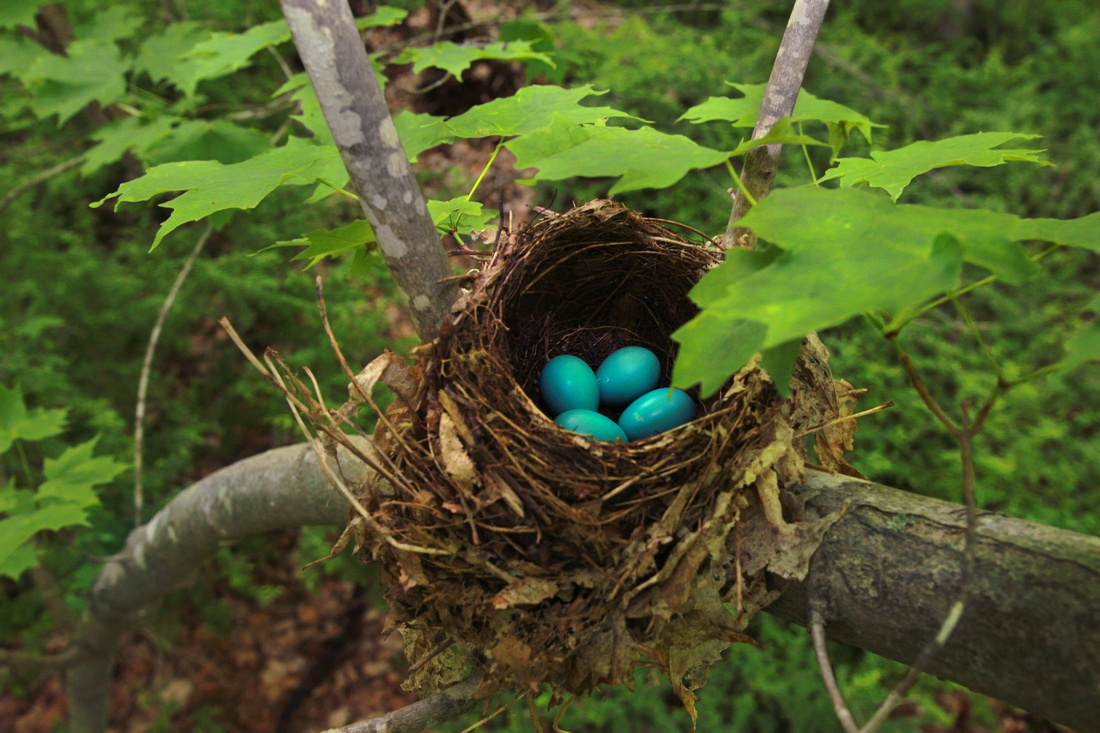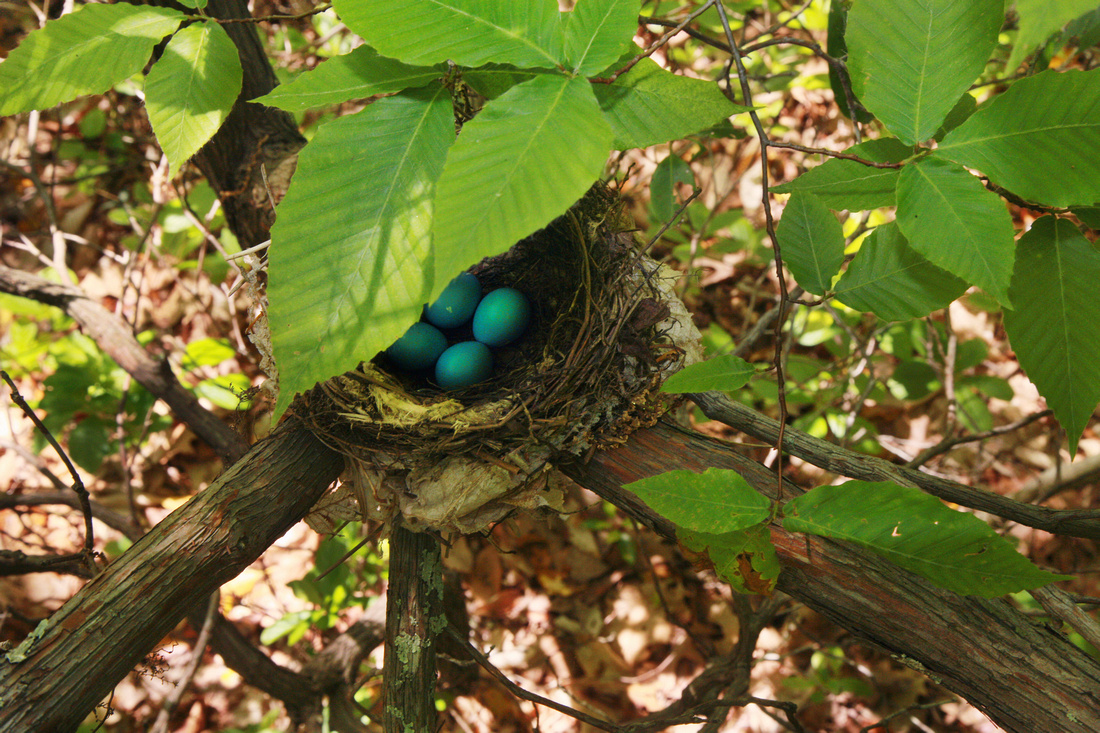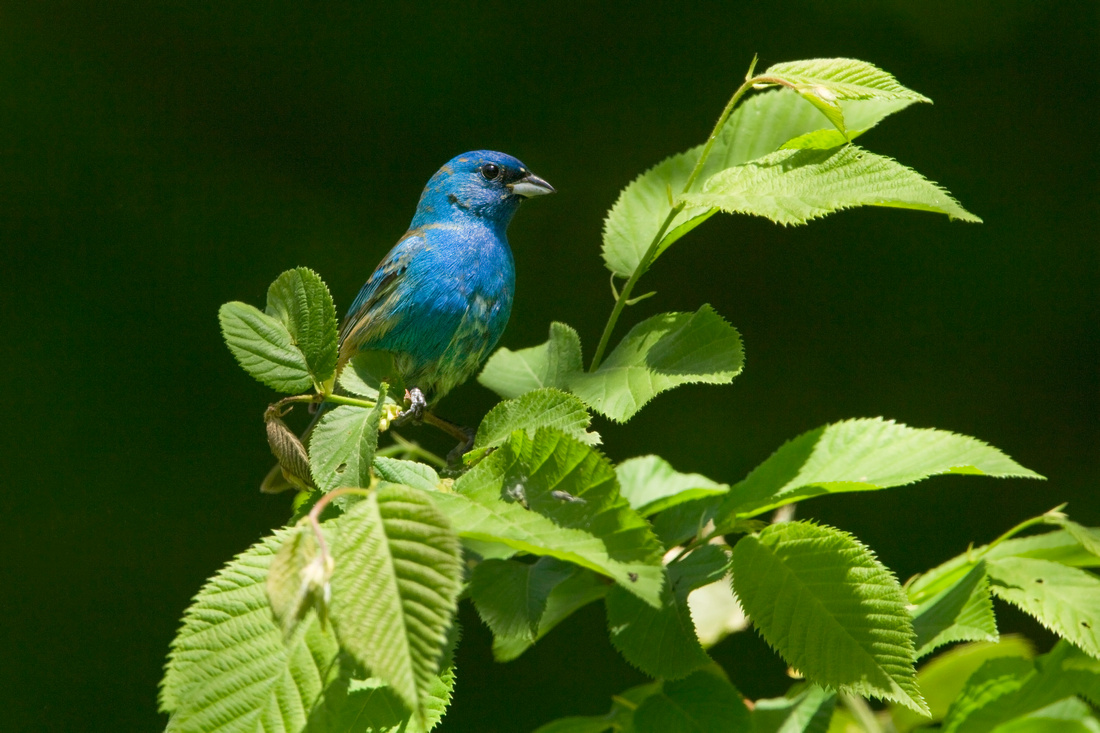A BLUE STREAK
I spent a fair amount of time this spring, like many others over the past 20 years, searching the woods near my home for opportunities to photograph birds that nest in the area. While I have pictures of many of the birds that breed in the local woodlands, photographing a nest is a much trickier challenge. Obviously, most birds do their best to keep their nests well hidden from predators, making them very difficult to find. Over the years I have figured out ways to locate nests, but it's incredibly time consuming. I can often find a dozen or more nests each spring, but only a small percentage of those can be photographed without disturbing the surrounding vegetation, which I will not do. With so much of the activity crammed into three or four weeks, one thing that strikes me every year is how quickly the nesting season flies by.
One day in May I found what looked like a freshly excavated Pileated Woodpecker hole and a tent caterpillar web near the parking lot of a land trust property in Lyme. I sat in my car and watched to see if any birds might visit either site. While waiting I saw a male Eastern Bluebird flying past several times carrying food. I followed it as it flew to one branch for a few seconds, then to anther, then eventually dropped down to a tree stump where it deposited its catch into a woodpecker hole in the decaying tree trunk. Bluebirds that nest in boxes around open fields are pretty easy to find and photograph, but it was the first time I'd seen one in a natural tree cavity nest in the woods.




Around the same time, I found fairly large nest on a bent sapling less than a mile a way. It looked like an American Robin or Wood Thrush nest, but I watched it at a distance for quite a while and didn't see any birds. I decided see if there were eggs in it and set up my camera with a remote trigger on an extendable pole and took a few shots from above the nest. It was empty. The following week I returned to find a Wood Thrush sitting on the nest. I usually don't take pictures of nesting birds while they are incubating but I wanted to see if the nest might have been parasitized by cowbirds since it was so exposed. Again, I watched from a distance until the bird left the nest, then using the same remote set-up I quickly photographed the nest from above. This time four sky blue eggs and no brown speckled eggs revealed that the nest had not been parasitized.


I found two other Wood Thrush nests, probably the most conspicuous song bird nests, the same week. I used the same method to photograph them and found them undisturbed as well. Another theme was developing this nesting season, I was on a blue streak.


A few days later, my streak was confirmed. An open gate in Nehantic State Forest, one that is normally closed, got me to stop and investigate. Just beyond the gate a bird was singing like the proverbial fat lady (Viking helmet and all) from the edge of a clearing. The song didn't register at first, but I should not have been surprised to find that it was an Indigo Bunting.


The blue streak was not powerful enough to overcome my uncanny propensity to find only Indigo Buntings that are in some state of molt, and not the perfect all blue specimens that my colleagues seem to find at exactly the same time.


As the nesting season quickly progressed, the bluebirds fledged their young while I was busy with work. I found a few other nests but only two could be photographed, and they too, turned out to be a disappointment (I'll detail in the next post). The Wood Thrush nests all hatched out and I was able to photograph one of them with the adults feeding their chicks. Then work, weather and family events kept me away for five days and I returned to find the nests all but empty. Two were abandoned and in the third, one almost full sized chick remained, missing only its tail feathers. I set up to photograph it, keeping a safe distance, and saw the adults feeding the other fledged chicks in the surrounding woods. One returned to feed the remaining chick a couple times but seemed to be trying to entice it to leave the nest to get its food. The leaves surrounding the nest had grown to obstruct the once open view, so I gave up and went back to my car. I watched for another half hour and saw the chick hop from the nest and out onto a branch, then flutter away out of sight. Just like that, the nesting season seemed to be over for another year, gone in a blue streak.